Product knowledge " The Different Types of Plactics and Classification
In my 5 years experienced working as a merchandiser in one of the top leading retail store in the Philippines " Handyman ".
I was able to learn a lot of things from DIY's, how to repair electrical problem, do some plumbing works, how to install door knobs, and learn most of the store products. From houseware to electrical, down to paint sections, building construction material, tools, plumbing, outdoor stuff and automotive section.
These are the things that we should learn if you are working in a retail store. Consumers are expected you to have an outstanding and excellent product knowledge.
Most of the common concern and inquiries of the customers is about features and benefits of a certain product. There are some customers who are not educated about the product they are buying. But as a responsible sales associate we are not only selling our products at same time we are educating our consumers about it.
Now as a person with vast knowledge about it, let me share to you some tips about houseware products specifically in plastic labels. I know most of us are not aware that the plastic we are using are health hazards and improper handling putting our lives at risks.
Only few people aware and giving attention to some symbols, signs, labels, stencils and marks that are visible in any consumer products. They refuse to learn something about that symbols which is very useful and helpful to them.


Consumer products such as shampoo container, water bottles, tumbler, pitcher and other plastic containers. Have corresponding classifications based on the materials composed how this product was made. If these container belongs to recyclable plastics or this plastic is for disposal because of its toxic chemical content.
The Society of Plastic industry or ( SPI ) established a classification system in 1988 to allow consumers and recyclers to properly recycle or dispose the plastic products.
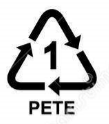
Kindly look at bottom of the plastic container if you see this SPI mark. Containers made from plastic that has ability to absorb odors or flavors from the food or liquid that are stored in this containers.
Plastic container made from this chemical the PETE are commonly recycled. PETE plastic is also used to make many common household items like bottles of beverages, jam jars, comb, rope and medicine jars.
Because PETE can be recycle sometimes it is used to make tote bags, carpet, winter clothing and more.
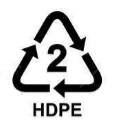
Any plastic container have this SPI marked 2 is made of HDPE High Density Polyethylene. Plastic containers with HDPE marked are very safe and they are not known to transmit any chemicals into food or drinks. Some of the examples are milk container, shampoo, hand soaps, lotions, concentrated juices and etc. This container is not advisable to be reuse if the container is not intended to food or beverages for storage. Same with SPI marked 1 this plastic can be recycle but not how the way it was originally made. They can make plastic crates, fencing and more.
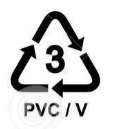
Any plastic container have this SPI marked 3 is made with Polyvinyl Chloride or we are familiar to PVC. This plastic are often can be recycled and it is visible in plumbing works like PVC pipes. This plastic can be harmful if ingested and should not be direct contact with any food items.
Recycled PVC's are use to make flooring, mobile home skirting and more.
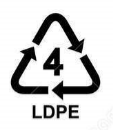
Any plastic container have this SPI marked 4 known as Low Density Polyethylene or LDPE. A kind of plastic with high durability and flexible commonly use for making plastic bags, durable bottles, sandwiches bags, and more.
LDPE is not commonly recycled, but it is recyclable in certain areas.
Recycled LDPE is used to make furniture's, garbage bags and more.
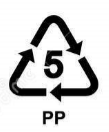
Any plastic container have this SPI marked known as Polypropylene. This plastic has strong and high durability that can withstand higher temperatures. It is also commonly recyclable, but it is accepted in some areas. Product made of PP are Tupperware, margarine containers, syrup bottles, prescription bottles and some stadium cups.
Recycle PP are used to make rakes, ice scoopers and more.
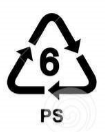
Any plastic container have this SPI marked 6 known as Polystyrene. Also known as PS and commonly known as Styrofoam. Can be recycled but it is difficult to do, so some of it are being dispose in some landfills.
If you are fun of eating in any fast food chains and you ordered for take out. The containers that is used like food storage boxes, plastic spoon/forks, disposable cups and etc. are made of PS.
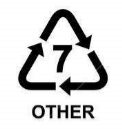
Lastly any plastic container have this SPI marked 7 known as Polycarbonate or Polylactide. A miscellaneous types of plastic are not defined by the first six SPI mark codes.
This type of plastic is very difficult to recycle and commonly used in making feeding bottles, medical storage, compact disc, large water bottles and more.
Recycled plastics in this category are used to make plastic lumbers and other products.
Take note :
This plastic SPI marked classifications that I am sharing will help consumer to identify the types of plastic they are purchasing. If these certain products are same for daily consumptions or health hazard plastic containers. This will also help to educate those people who are not aware to these marked codes.
For example:
BPA free water bottles, When I was not yet educated about this label I always see on the body of any container. Where its says " This product is 100% BPA free and I simply ignore it because of my unawareness.
After I was exposed to my previous job as merchandiser I knew that BPA is a chemical substance that should not be taken by human because of its ability to cause respiratory problem.
There is a study in a certain university in California in 2013 when they diagnosed 7 out of 10 children found that they have respiratory problem. The cost of that diagnosis because of those babies using feeding bottles with BPA chemical content. As far as I know BPA is a chemical that can help plastic products last its quality for how many years.
But because of that case, Where California is very strict in terms of healthy precautions. They include BPA also known as Bisphenol A to the list of prohibited chemicals to be used in making plastic products.
Hope this little sharing of my ideas about plastic types and classification can help you identify what is safe for consumption and what is health hazard products.
don't forget to support @surpassinggoogle for his generosity and kindness by simply voting @steemgigs as your witness
or if you want @surpassinggoogle to choose as your proxy just key in @surpassinggoogle
please do also support my ever supportive friends my discord family @smaeunabs @epicdominic @watersnake101 @cejero21 @mabzter @jaypeesun07 @iamqueenlevita @oscargabat @gailbelga @luvabi @dreamiely @bearone @st3llar @dwightaden @cloh76 @princepr @immarojas @allmonitors @flabbergast-art @bobiecayao and the rest of @steemph family.
Just leave you comments, upvote , and resteem
Thank you for visiting!!

Go here https://steemit.com/@a-a-a to get your post resteemed to over 72,000 followers.